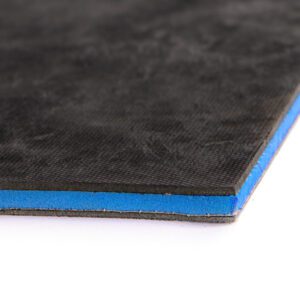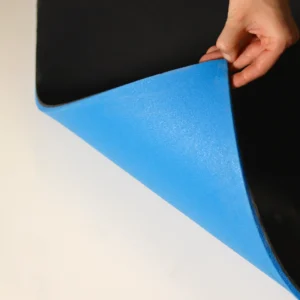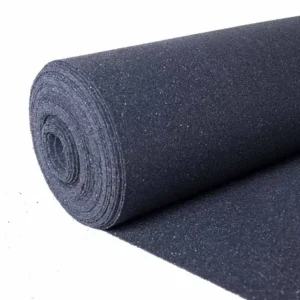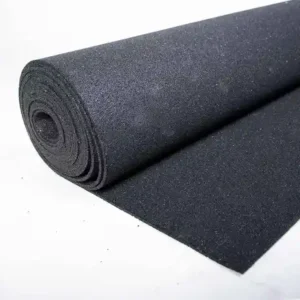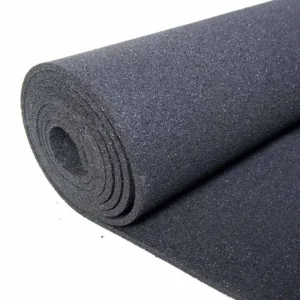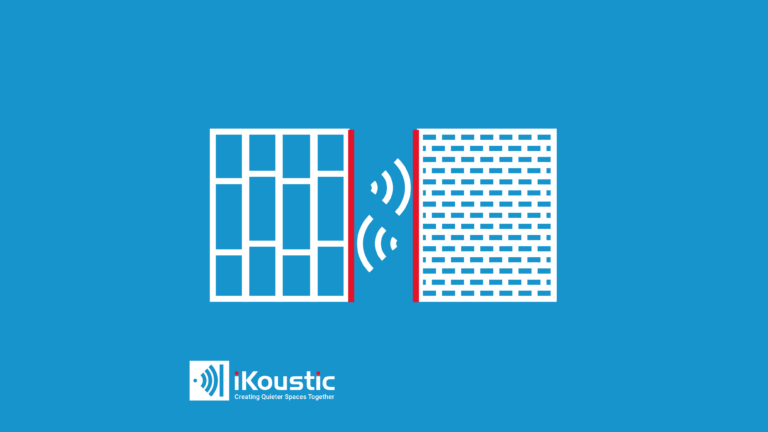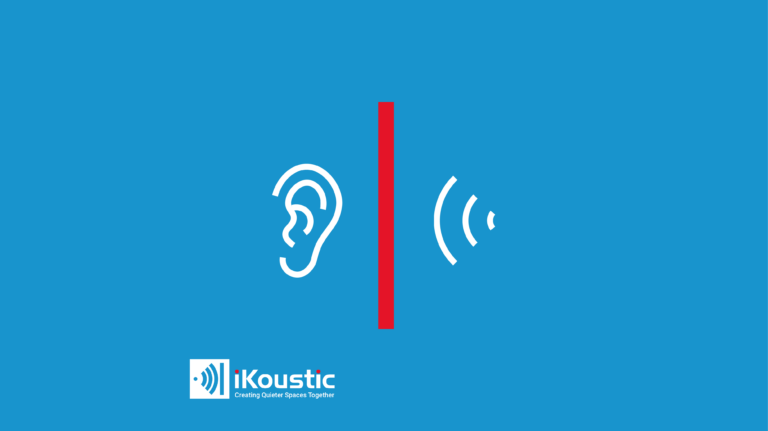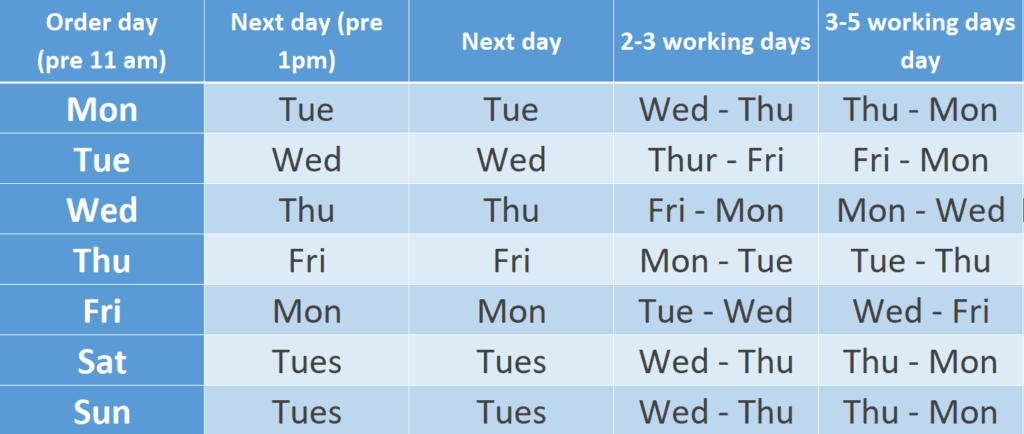Acoustic underlays (easiest floor soundproofing)
Acoustic underlays provide the easiest floor soundproofing and can reduce impact and airborne noise. Soundproof underlays are laid down much the same as regular open-cell foam underlayment, however, acoustic materials will either add mass or decouple. Adding mass will reflect airborne noises like talking or music, while a decoupling layer prevents your feet from thudding onto the floor.
What is acoustic underlay?
Acoustic underlay is used for floor soundproofing and will prevent airborne noises (music, talking, TV), from traveling out of the room, or, footsteps from disturbing rooms below. Acoustic underlays need to be made of more than one material to prevent both airborne and impact noise as these two qualities cannot be found in one layer. You can also buy acoustic underlay in single layers if you only want to control airborne or impact noise. These can be used alongside regular underlay for carpet if desired.
What is the best underlay for acoustic floors?
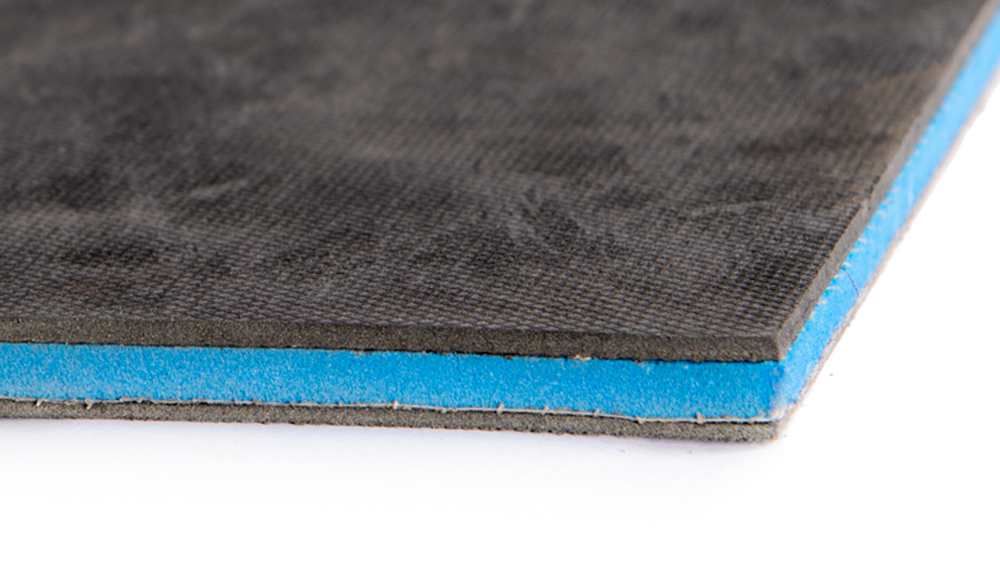
The best underlay for acoustic floors is a triple-layered mat (MuteMat 3), consisting of two layers of mass-loaded vinyl with closed-cell foam sandwiched between. This triple-layered mat offers complete protection from different airborne frequencies, as well as, impact noise.
MuteMat 3 has two different thicknesses of mass-loaded vinyl so that a broader spectrum of frequencies can be reflected. The closed-cell foam layer prevents your foot from making contact with the floor as the material does not bottom out. Ordinary underlay for carpet is an open structure and will compress underfoot, which creates structural vibrations and noise. This is why several layers of regular underlay will not result in good floor soundproofing.
Does thick underlay reduce noise?
No, thick underlay will not reduce noise, unless, it has additional acoustic properties of high mass or isolation. Regular underlay provides comfort underfoot, by compressing, however it does not have acoustic benefits. The mass of underlayment is low, so it cannot block airborne noises and two layers will not sufficiently increase mass to achieve this.
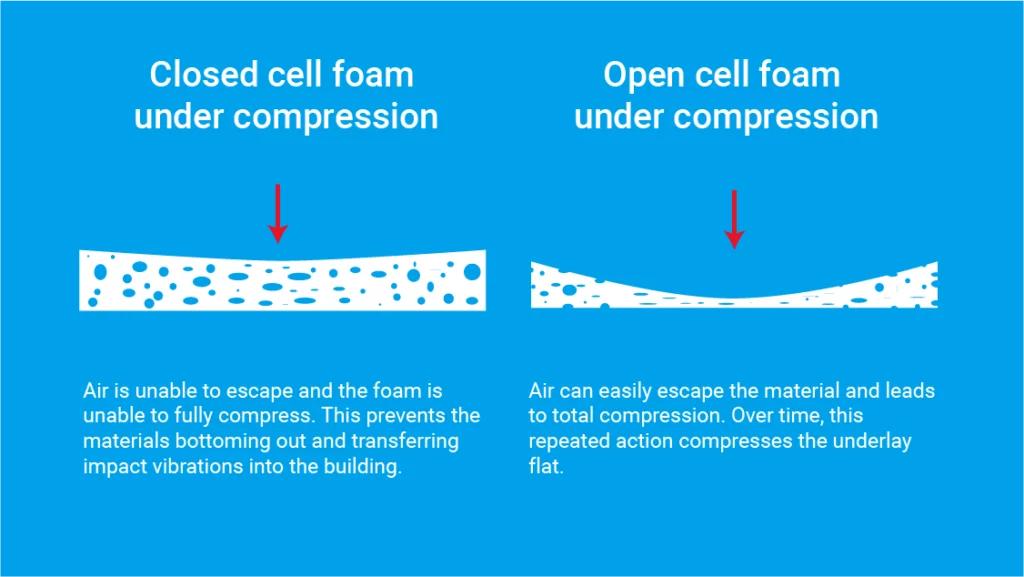
To reduce impact noise, an underlayment needs to isolate the impact from the subfloor. Normal underlay has an open structure, which means air is pushed out and your foot will make contact with the flooring. Over time, the underlay will not fully bounce back and the impact sound will get worse. While two layers will initially help, it will not stand up to high traffic and eventually fail you. We use materials will closed structures so they are unable to bottom out or fully compress.
How thick is floor acoustic underlay?
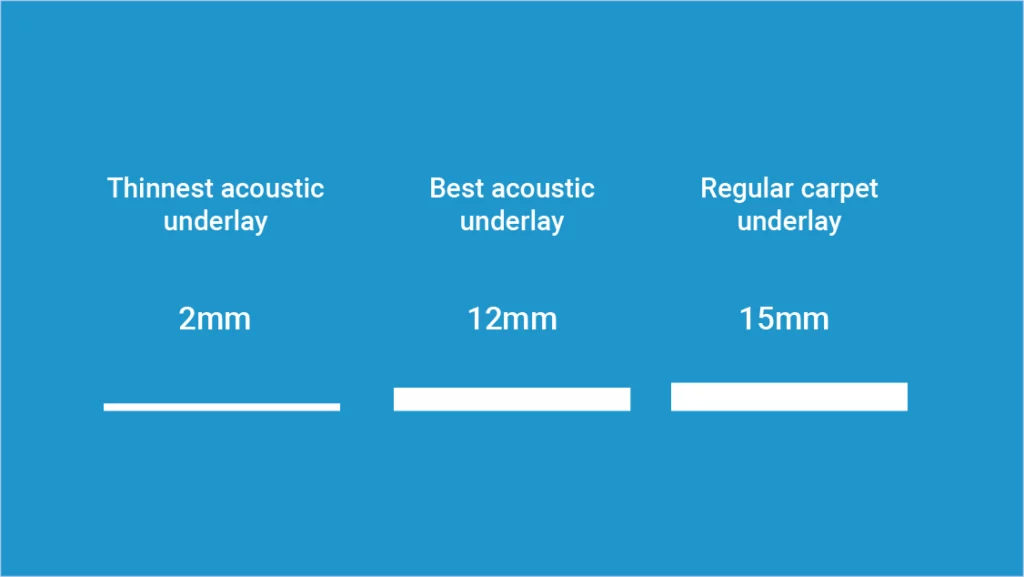
The thinnest floor acoustic underlay is 2mm, the best acoustic floor underlay is 12mm and ordinary underlay is up to 15mm thick. Acoustic underlay is not any thicker than normal underlay, but it usually has a higher mass. Floor soundproofing doesn’t have to take up a lot of head space to be effective but it does require the right materials, such as mass-loaded vinyl, closed-cell foam or rubber crumb matting.
How do you install acoustic underlay?
Acoustic underlay can be installed directly over a subfloor and either glued or lose-laid down. Ideally, before installing acoustic underlay, a perimeter flanking band should be installed around the perimeter of the room, which will require lifting the subfloor. This is best practice for floor soundproofing and will reduce impact noise traveling through other parts of the building.

When the subfloor has been replaced, you can lay the acoustic matting down, or glue if desired. Cloth tape is stuck over the joins the perimeter flanking band can then be folded over the top and trimmed to fit the skirting board when it has been installed.
How do you install acoustic underlay for hard floors?
To install acoustic underlay for hard flooring, you may need an additional rigid layer before laying the wood or LVT. Some acoustic underlays do not compress to cause this issue, but the best acoustic underlays are a bit thicker and you cannot lay engineered wooden flooring directly over.

Step 1
To install acoustic underlay for hard floors, first run the perimeter flanking band along the edge of the room. This goes under your subfloor. Lay the subflooring over the top and loose lay the acoustic matting. Acoustic matting can also be glued down, if needed.

Step 2
Lay a 6mm ply, or equivalent, over your acoustic underlay. This will provide needed support to the engineered wood, LVT or other hard flooring you are using. You can now lay the flooring, the perimeter flanking band should still be providing a barrier against the walls.

Step 3
When the hard flooring is finished, fold the flanking band downwards and stick. The skirting is then rested over the top of this band to prevent flanking transmission. Cut the band flush with the skirting and apply acoustic sealant to the gap to finish.
Can you buy soundproof underlay?
Yes, you can buy soundproof underlay which will reduce the transmission of noise from the room into the rooms below. Soundproof underlay can be made to reduce airborne noises like talking or music, or, to reduce impact noise from footsteps. Acoustic underlays made from more than one material are usually designed to mitigate both types of noise at once.
The best acoustic underlays for airborne and impact noise reduction are the MuteMat 3 and the MuteMat 2. These can be used with carpet directly over the top, or, with an additional layer of play for engineered wood and LVT finishes.
Do I need acoustic underlay?
You need acoustic underlay if your floor is transmitting either airborne or impact noise to the room below. Ground floor rooms do not need floor soundproofing as the vibrations go into the earth. Acoustic underlay will help to reflect noises like music, talking or TV from going downstairs. If you hear heavy footsteps from the floor above, adding an acoustic underlay will help quieten the footfalls.
Soundproof underlay for talking and music noise
To prevent noise like talking or music from traveling through your floor, you need to increase the mass. This can be done with mass-loaded vinyl, which is slim-line for the weight increase it offers. MuteMat 3 has two layers of this material which are both adept at reflecting different frequencies.
Soundproof underlay to quiet footsteps
Soundproof underlay to quiet footsteps works by decoupling the floor and foot so they cannot touch. This doesn’t mean creating an expensive floating floor, but, you need a material with isolation capabilities. We use closed-cell foam or rubber crumb matting. Neither of these acoustic underlays bottom out, so your footsteps are made quieter and softer.
You can buy rubber crumb matting as a stand alone acoustic underlayment. It comes in different thicknesses and the thicker it is, the more impact it can absorb. Closed cell foams are used in our two best acoustic underlays, the MuteMat series. These mats resist airborne and impact vibrations.


